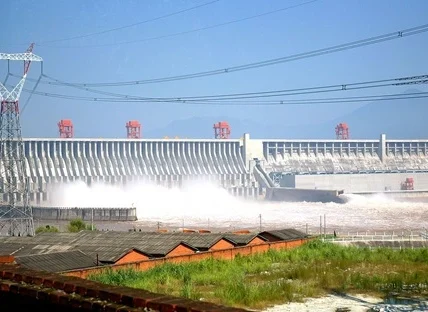It could very well be the case that you’re reading this post on your smartphone, and you didn’t just buy it from any company, you bought it after getting recommendations and watching reviews, and then from a reputed or trusted company out there, correct? Well, that’s what most of us do. Like, you could be holding an Apple iPhone, or a Samsung Galaxy series phone in your hand right now, but just like that, everyone’s preference is different. And many different companies make different devices as per the preferences of customers. So, yes, if you’re wondering like which are the top 15 biggest smartphone companies in the world as of 2025, then just keep on reading. Here we go.
1. Samsung Electronics
Sure enough, in the competitive world of global smartphones, Samsung has yet again outshone everyone else, and we all have seen their kinda incredible 19% market share and over 300 million units shipped in the last fiscal year. Like, the Galaxy S25 Ultra is setting new benchmarks for flagship performance, while the Galaxy Z Fold 7 further shows us how good their smartphone foldable technology is getting, you know? Sure enough, with this value proposition to both premium buyers and those who are on a budget, Samsung seems to be the most universally marketable out there.
2. Apple Inc.
The hold that Apple has on the premium market isn’t something new, it still has a 16% market share with 250 million units sold around the globe as of 2025, we all know that by this point, right? Like, their recent, the iPhone 16 Pro Max uses advanced AI and boasts next-gen camera technology to reinforce Apple’s reputation of being the coolest smartphone manufacturer out there, and so much more, built into the seamless ecosystem of devices such as the Apple Watch and AirPods.
3. Xiaomi Corporation
Then, Xiaomi is at number three with a 15% market share and 240 million units sold, owing to its cost and its being high-end. This is one such brand that rose to fame just because they understood what a regular smartphone buyer wants, and they literally delivered it at a much more affordable price point. That’s how they made it big. Like, it is the Xiaomi 15 Ultra, which is really a fan favorite in terms of camera performance. It really excels and yet is at an affordable price point, that’s for sure.
4. Vivo
Next on the list, did you know that the fourth largest smartphone brand Vivo has now a 10% share of the market in 2025 shipping 160 million units? Like, its flagship Vivo X100 Pro+ raised the bar for smartphone photography, to which not only creators but also photography enthusiasts can appeal. Sure enough, with the sleek design fused with affordability, this promises steady growth for Vivo, mostly within emerging markets that appreciate style and performance, that’s for sure.
5. Oppo
On this list, yes, Oppo closes at fifth with a market share of 9%, shipping nearly 150 million units this 2023. Its flagship, the Find X7 Pro, has proved to redefine camera technology in smartphones, having a solid mid-range version called the Reno series, which remains the favorite of people who want a style-centric smartphone. Oppo phones are for those who want a stylish, decently priced but good-performance device.
6. Huawei
Then, with 110 million units shipped, Huawei, despite sanctions, keeps a 7% market share. As for some technical info here, taking this flagship model as an example is the Mate 60 Pro+: the trademark innovation of Huawei featuring its own HarmonyOS along with advanced imaging technology. They’re doing pretty great in Asia right now, and that alone has made us rank them this high on this list.
7. Realme
Sure enough, this is the new star on the list, which has not an impressive 6% of the market share, shipping 100 million units in the year 2025. That’s pretty insane for a new smartphone brand if you think about it for a sec. The model calls for elite performance at an affordable price in comparison to flagship devices, and that’s what has made them super famous. An online first, this brand is effectively bringing itself to regions like India and Africa at the price points it’s charging.
8. Honor
Next on the list, Honor continues its steady rise After independence from Huawei where it now commands 5% of the international market and 80 million units shipped. Just to give you perspective on things, its Honor Magic 7 Pro boasts a beautiful AI camera rather than design and is winning lots of excitement in Europe and Asia alike. Honor is reviving its tagline appeal for affordability without compromising on quality by winning consumers in most strategic territories.
9. Motorola
It is indeed a popular brand, and its 4% market share proves that by selling 70 million units in 2025, cut across, especially in America, you know? But the biggest hit by far has been the amazing retro-modern He’s an amazing nostalgia trip while combining cutting-edge foldable tech, the Razr Flip 2025. Keep in mind though, the device is known for its stock-like Android experience and great durability designs help Motorola remain competitive in an increasingly competitive space, that’s for sure.
10. Transsions Holdings
Many of you may not have heard of this one, but just so you know, Transsion actually is the parent company of Tecno, Itel, and Infinix, with all these brands enjoying an astonishing 4% of the market. Now get it? Well, just so you know though, the parent company was able to ship over 65 million units in only one year. Like, the budget-friendly yet feature-rich brands include Tecno Camon 30 and Infinix Zero Ultra.
11. Sony
You’d all agree that Sony is one such input company with a tiny share of 3 percent in the market and a few million units that would be shipped in 2025; it is around the 50 million units mark “Renowned for its professional-grade smartphones, the Xperia Pro II has become a favorite among content creators with its 4K OLED display and superior cameras, right?
12. Nokia
Gone are the days when Nokia used to be the best phone-making company in the world, but now they’ve kinda faded away, yet, still making it to this list because they’re at least doing something. Like, the Nokia XR30 stands for tough and rugged devices without compromising on performance longevity and that’s how they’re returning to this game again.
13. Google
If it is about the best flagship smartphones out there, you must have heard of Google’s Pixel series, right? Just so you know though, Google’s Pixel portfolio has a hold of a measly market share of 2% through the shipping of as many as 35 million units by 2025. Like, the Pixel 8 Pro yet again brings the leading light in terms of AI-powered photography and all-smooth Android operation.
14. LG
Sure enough, LG is also coming back. At the end of 2025, it will have a 1.5% market share, having shipped 30 million units. Best of all is the highly innovative Velvet Pro, distinguished by its dual display design and once again making LG the master of multitasking and productivity.
15. Asus
Asus here comes at number 15, grabbing 1% of the total market, mainly because of its ROG Phone 8 which specializes in gaming. To such excellence, Asus registered a shipment of 20 million units only. Despite that, it dominates the niche gaming smartphone segment with features, such as ultra-fast refresh rates and advanced cooling systems.
Conclusion
There you have it. And let’s be honest here, literally more than 85% to 90% of people go for the smartphone from these companies, and that’s just because they really make good smartphones. So, that is it for today, we’ll see you in the next one.

Brandon is the cheif editor and writer at WorldUnfolds.com. With a passion for storytelling and a keen editorial eye, he crafts engaging content that captivates and enlightens readers worldwide.





























